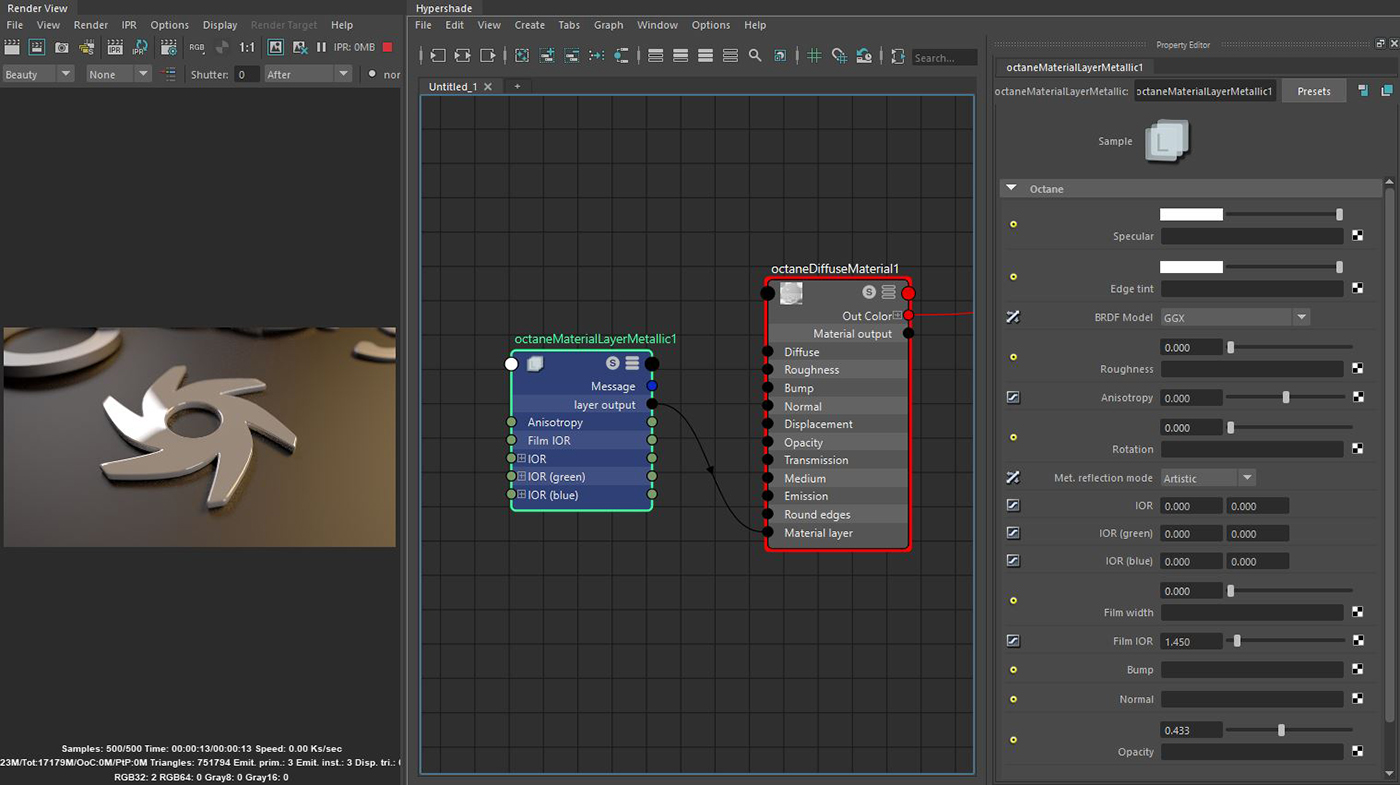
The Metallic material layer is used for highly reflective materials that have colored reflections (figure 1). For more information, see the Metallic MaterialThe representation of the surface or volume properties of an object. topic in this manual.

Figure 1: A Material Layer Metallic node added to the Material Layer pin on a Diffuse materialUsed for dull, non-reflecting materials or mesh emitters.
SpecularAmount of specular reflection, or the mirror-like reflection of light photons at the same angle. Used for transparent materials such as glass and water. - The layer's coating color.
Edge Tint - The color of the edges of the metal material, only used with Artistic and IOR+Color modes found under the Metallic Refl. Mode.
BRDF Model - The BRDF (Bidirectional Reflectance Distribution Function) determines the amount of light that a material reflects when light falls on it.
Roughness - The Metallic layer's roughness.
Anisotropy - The Metallic layer's anisotropy. A value of -1 is horizontal, while 1 is vertical. A value of 0 is Isotropic.
Rotation - The Metallic Anisotropic reflection's rotation.
Metallic Reflection Mode - This changes how Octane calculates reflectivity.
IOR - Complex-valued IOR (n-k*i) controlling the specular reflection's Fresnel effect, where n = the refractive index and k = the attenuation or extinction coefficient. For RGB mode, the IOR for red light (650nm).
IOR (Green) - For RGB IOR mode, this is the IOR for the green light (550nm).
IOR (Blue) - For RGB IOR mode, this is the IOR for the blue light (450nm).
Film Width - Sets the film coating's thickness.
Film IOR - This sets the film coating's Index Of Refraction.
Bump - Simulates a relief using a Greyscale texture interpreted as a Height map for the layer.
Normal - Distorts the layer normals using an RGB image.
Opacity - Controls the layer's opacity with a Greyscale texture.